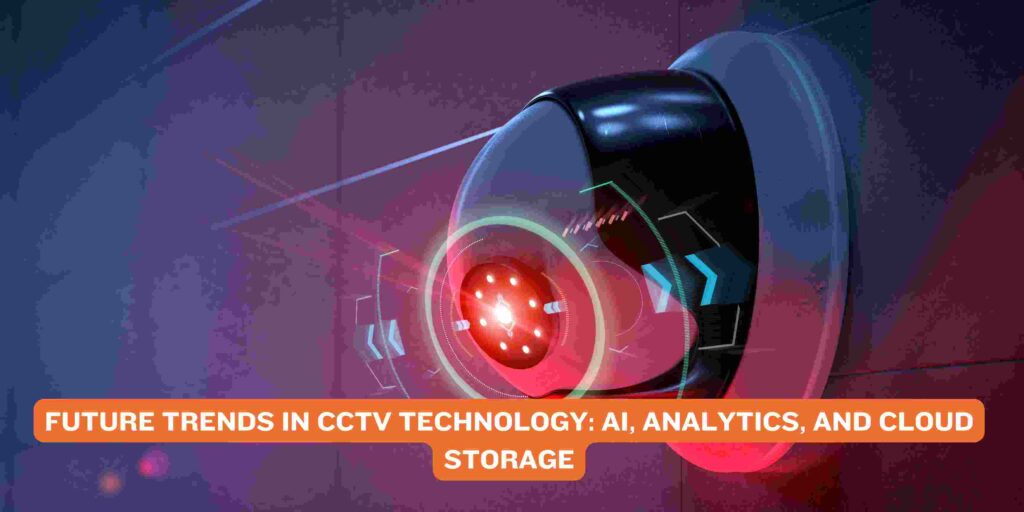
The CCTV (Closed-Circuit Television) industry is undergoing rapid transformation, driven by technological advancements, innovation, and evolving customer demands. As we look towards the future, several key trends are emerging that are set to redefine the capabilities, functionalities, and applications of CCTV systems. This blog post explores the future trends in CCTV technology, focusing on Artificial Intelligence (AI), analytics, and cloud storage, and discusses their potential impact on surveillance, security, and business operations.
1. Artificial Intelligence (AI) and Machine Learning (ML) in CCTV
AI and machine learning are revolutionizing the CCTV industry by enabling cameras and surveillance systems to analyze, interpret, and respond to visual data more intelligently and efficiently. Some key AI-driven advancements and applications in CCTV technology include:
- Object Recognition and Classification: AI-powered CCTV cameras can recognize and classify objects, such as vehicles, people, animals, and specific items, enabling more accurate and targeted surveillance, monitoring, and alerting.
- Facial Recognition: Facial recognition technology in CCTV systems can identify and verify individuals, track movement, and detect suspicious or unauthorized persons, enhancing security, access control, and law enforcement capabilities.
- Anomaly Detection: AI algorithms can analyze and identify abnormal or unusual patterns, behaviors, and activities in real-time, enabling proactive monitoring, detection of security threats, and timely intervention and response.
- Predictive Analytics: By analyzing historical data, trends, and patterns, AI-powered CCTV systems can predict and forecast potential security incidents, risks, and vulnerabilities, helping organizations to adopt preventive measures, mitigate risks, and enhance situational awareness and preparedness.
2. Advanced Analytics and Insights
In addition to AI and machine learning, advanced analytics and data-driven insights are playing a crucial role in enhancing the functionality, performance, and value proposition of CCTV systems. Some key trends and developments in CCTV analytics include:
- Behavioral Analytics: Analyzing and interpreting human behavior, movement, and interactions captured by CCTV cameras to gain insights into customer behavior, employee productivity, crowd dynamics, and public safety.
- Heat Mapping: Utilizing heat mapping technology to visualize and analyze foot traffic, movement patterns, and hotspots in retail stores, public spaces, and events, enabling businesses to optimize layouts, improve customer experiences, and increase operational efficiency.
- Integration with IoT Devices: Integrating CCTV systems with Internet of Things (IoT) devices, sensors, and smart technologies to collect, analyze, and leverage real-time data, insights, and intelligence for enhanced surveillance, automation, and decision-making.
3. Cloud Storage and Remote Monitoring
Cloud computing and storage are transforming the way CCTV systems are deployed, managed, accessed, and utilized, offering scalability, flexibility, and accessibility advantages over traditional on-premises solutions. Some key benefits and trends of cloud-based CCTV systems include:
- Scalability and Flexibility: Cloud-based CCTV systems can easily scale up or down based on changing requirements, volumes, and needs, enabling organizations to adapt, expand, and evolve their surveillance capabilities and infrastructure as per demand.
- Remote Monitoring and Access: Cloud storage enables remote access, monitoring, and management of CCTV footage, alerts, and analytics from anywhere, anytime, using any device with an internet connection, enhancing convenience, control, and collaboration for users.
- Cost-Efficiency and Maintenance: Cloud-based CCTV solutions eliminate the need for onsite hardware, infrastructure, maintenance, and upgrades, reducing capital expenditures (CapEx) and operational costs, and enabling organizations to focus on core business activities, innovation, and growth.
- Security and Compliance: Leveraging advanced encryption, authentication, and security protocols, cloud-based CCTV systems provide robust data protection, privacy, and compliance capabilities, ensuring the confidentiality, integrity, and availability of sensitive surveillance data, footage, and information.
Conclusion
The future of CCTV technology is promising, with AI, analytics, and cloud storage leading the way in driving innovation, enhancing capabilities, and delivering value-added features, functionalities, and benefits to users, organizations, and industries. By embracing these emerging trends, adopting advanced technologies, and investing in intelligent, integrated, and innovative CCTV solutions, organizations can enhance security, optimize operations, improve decision-making, and create safer, smarter, and more secure environments for people, assets, and communities. As the CCTV industry continues to evolve and innovate, it’s essential for stakeholders, users, and decision-makers to stay informed, educated, and prepared to leverage the full potential of future technologies and trends in CCTV technology effectively.


